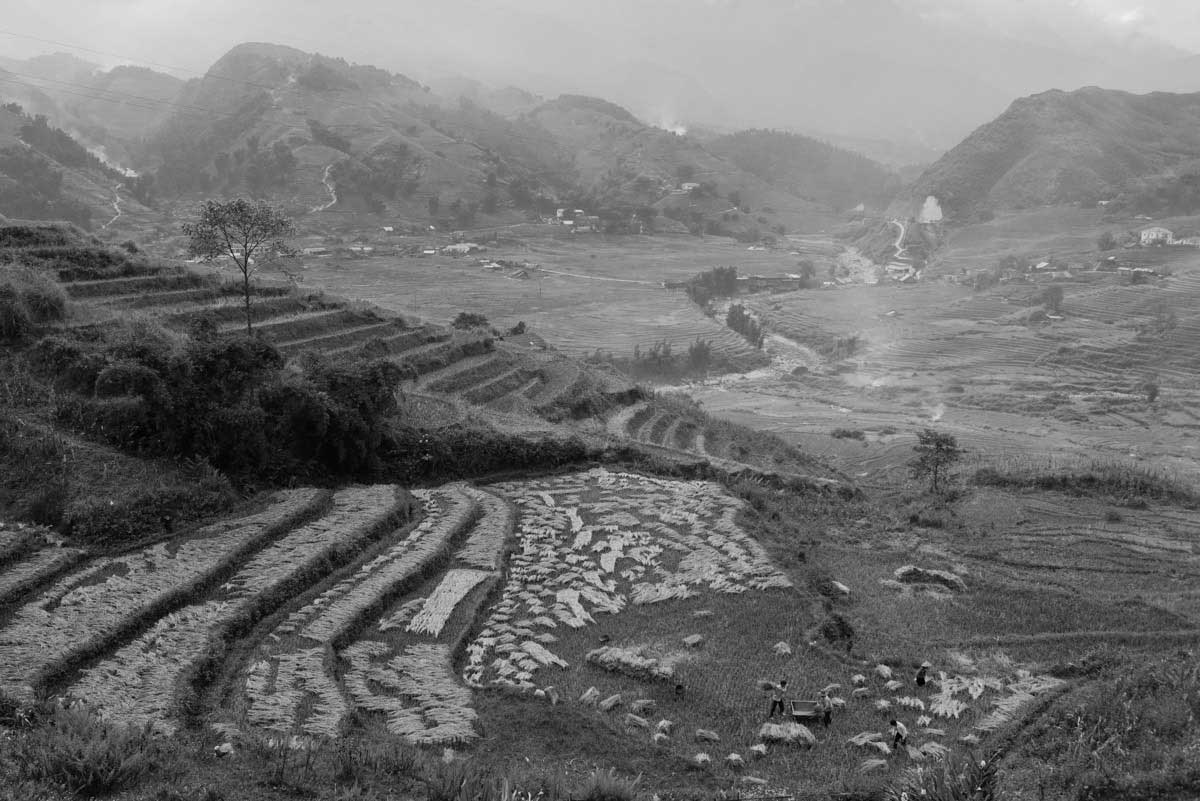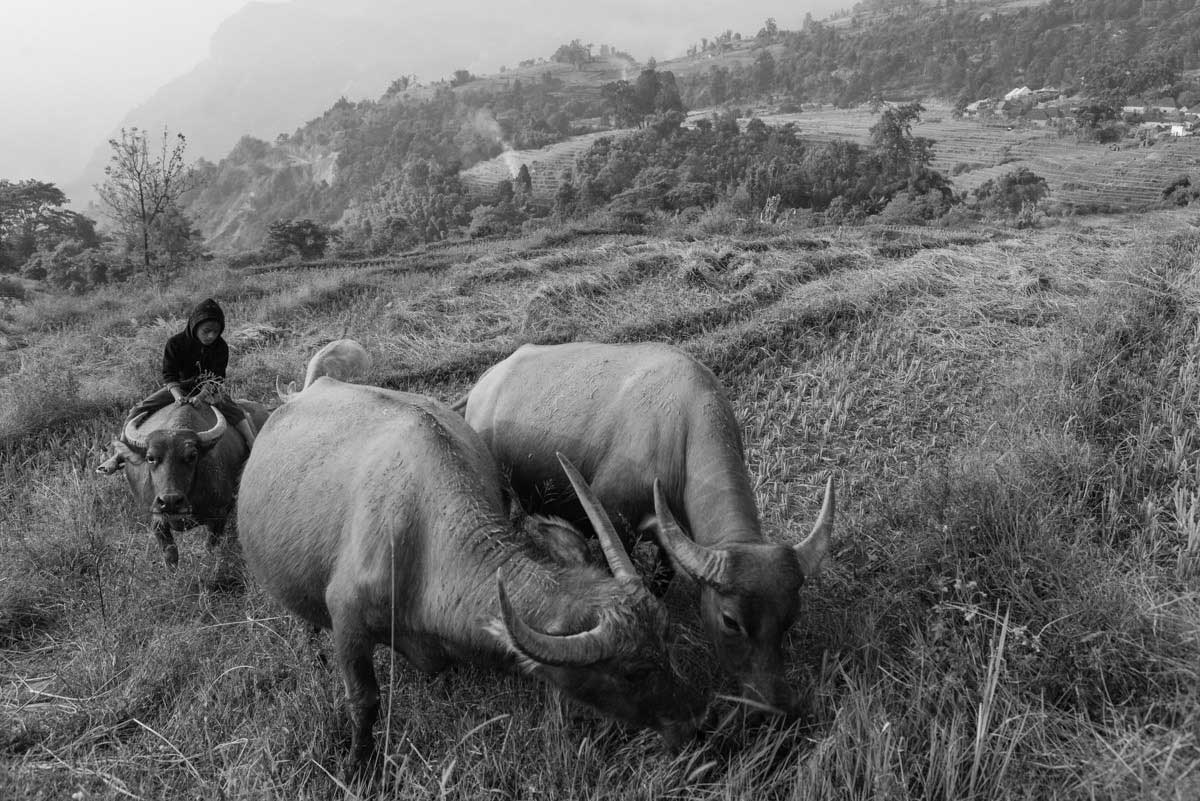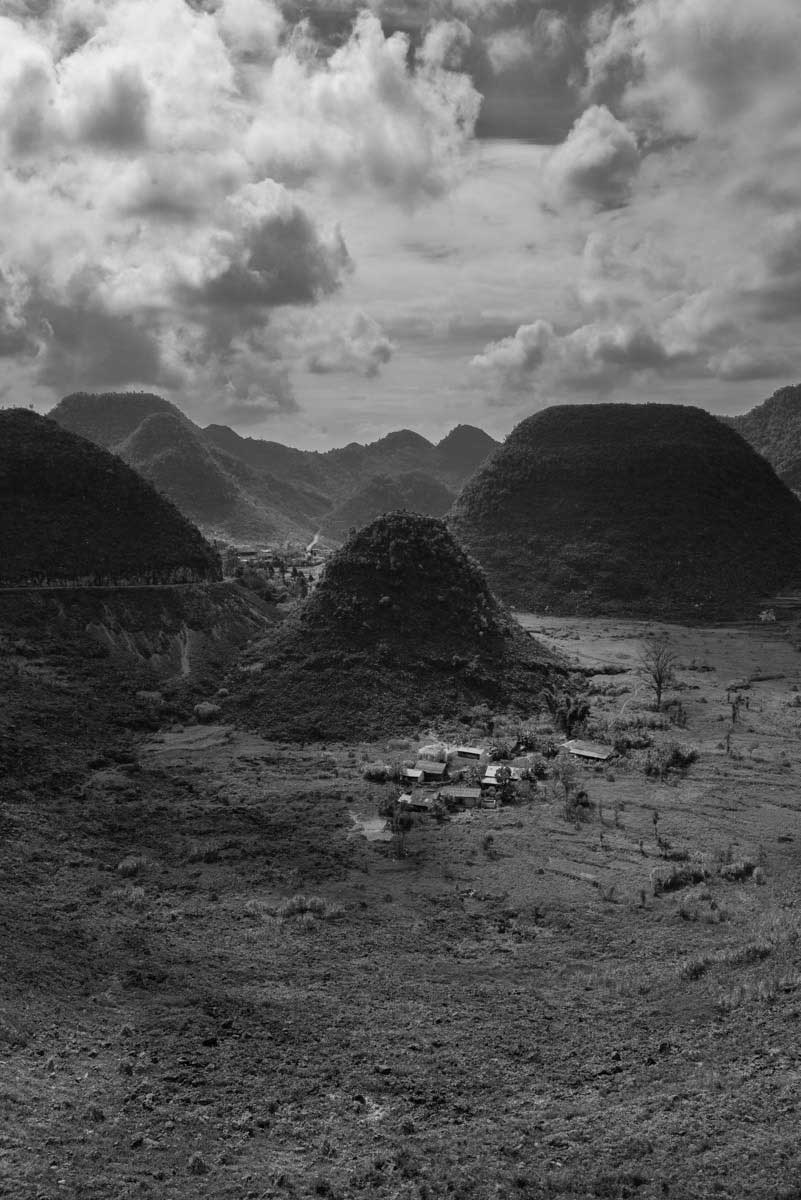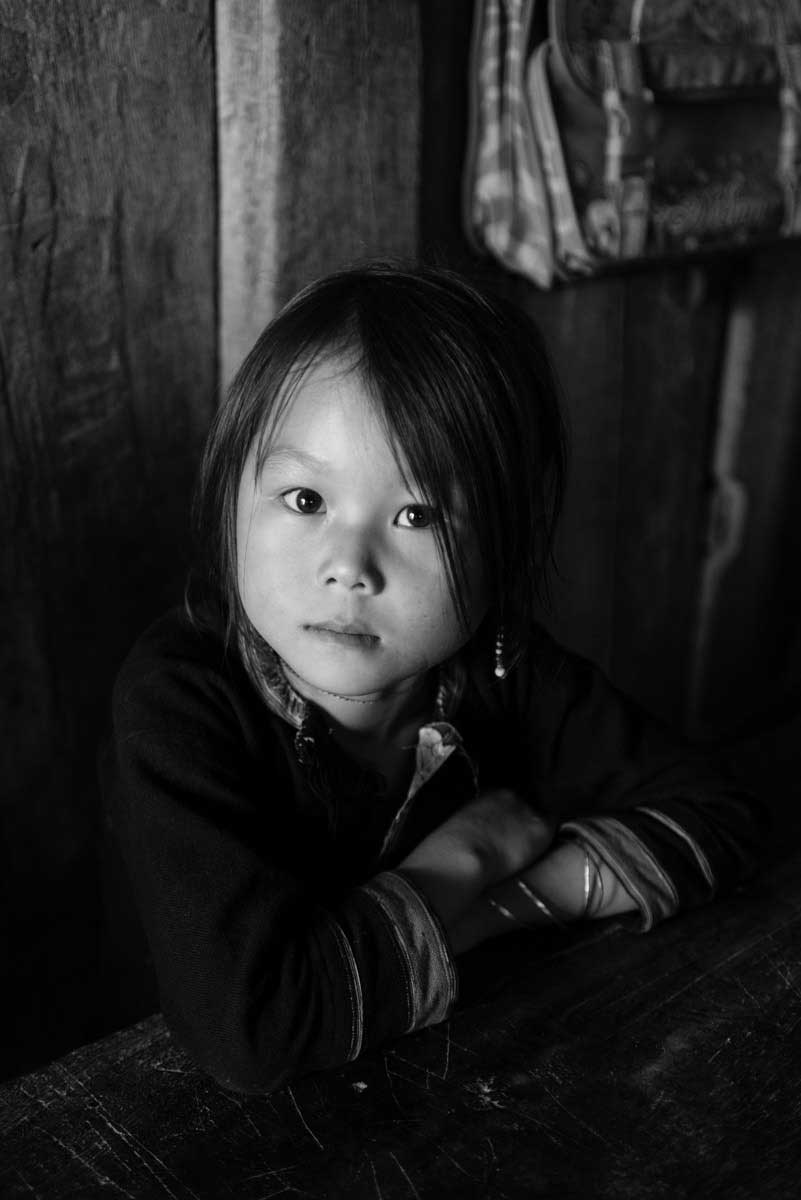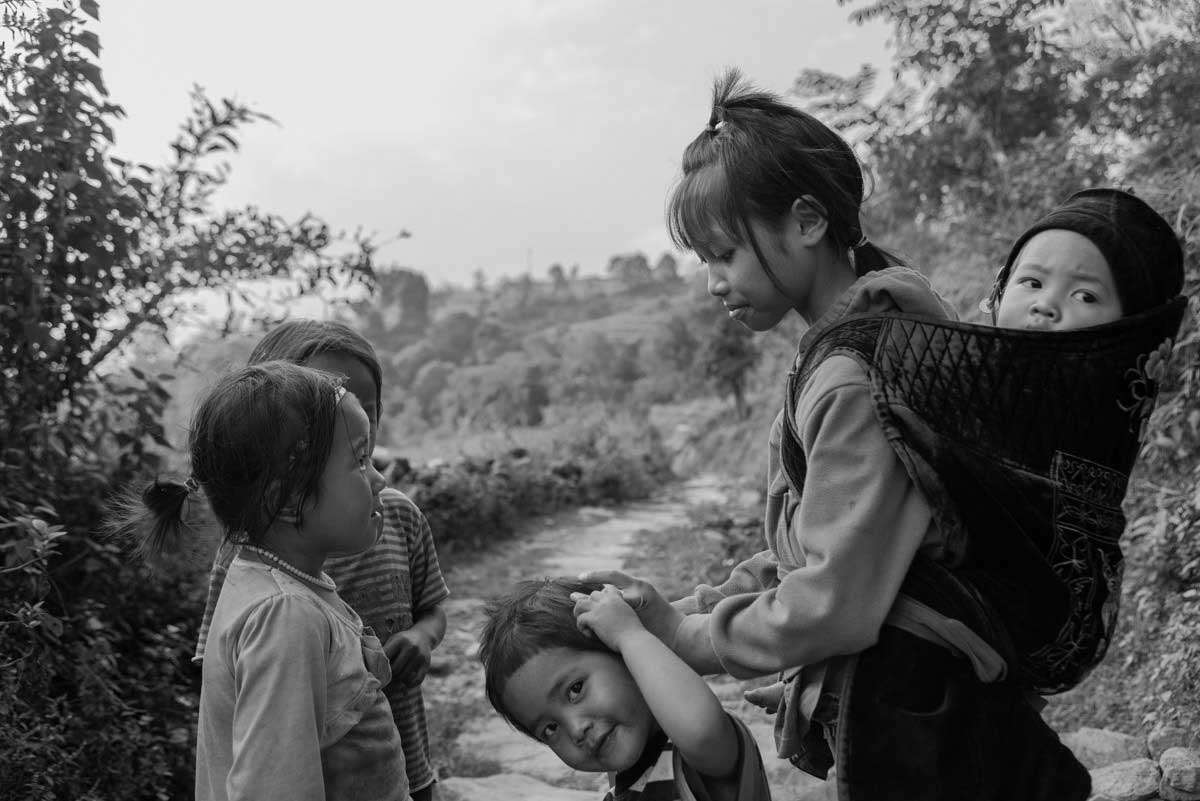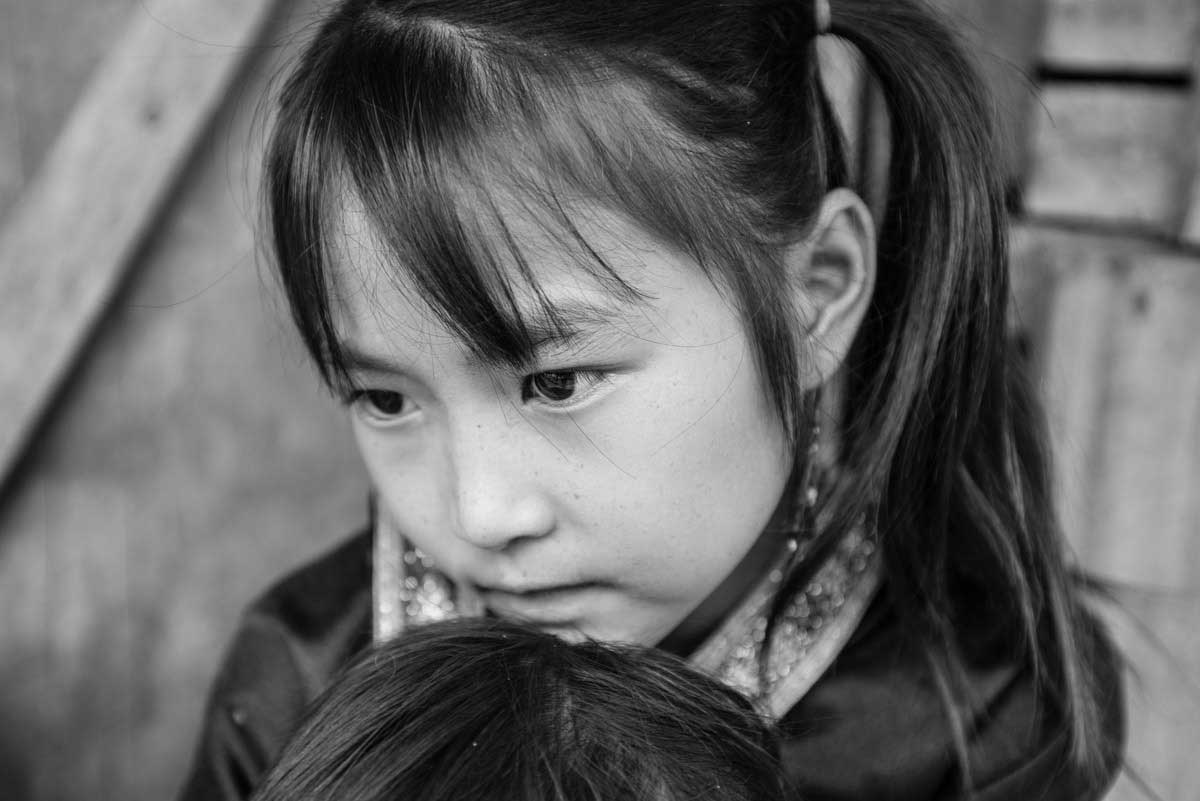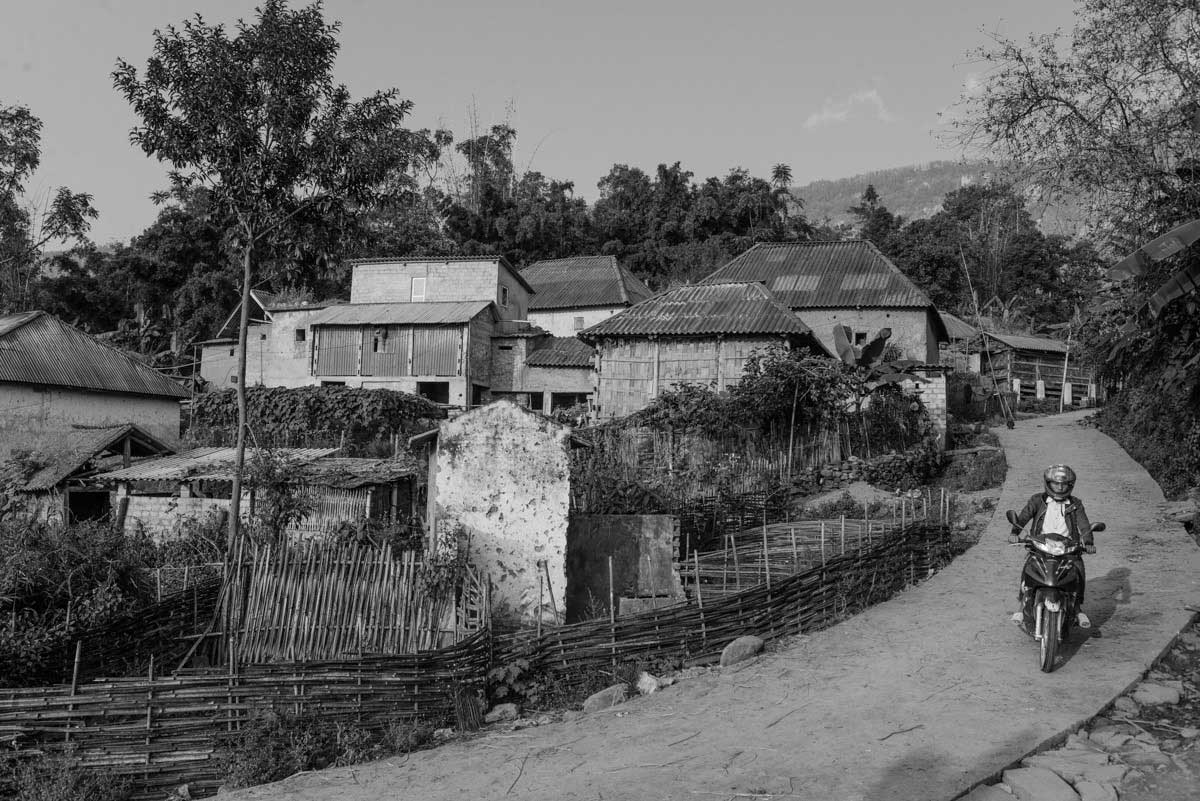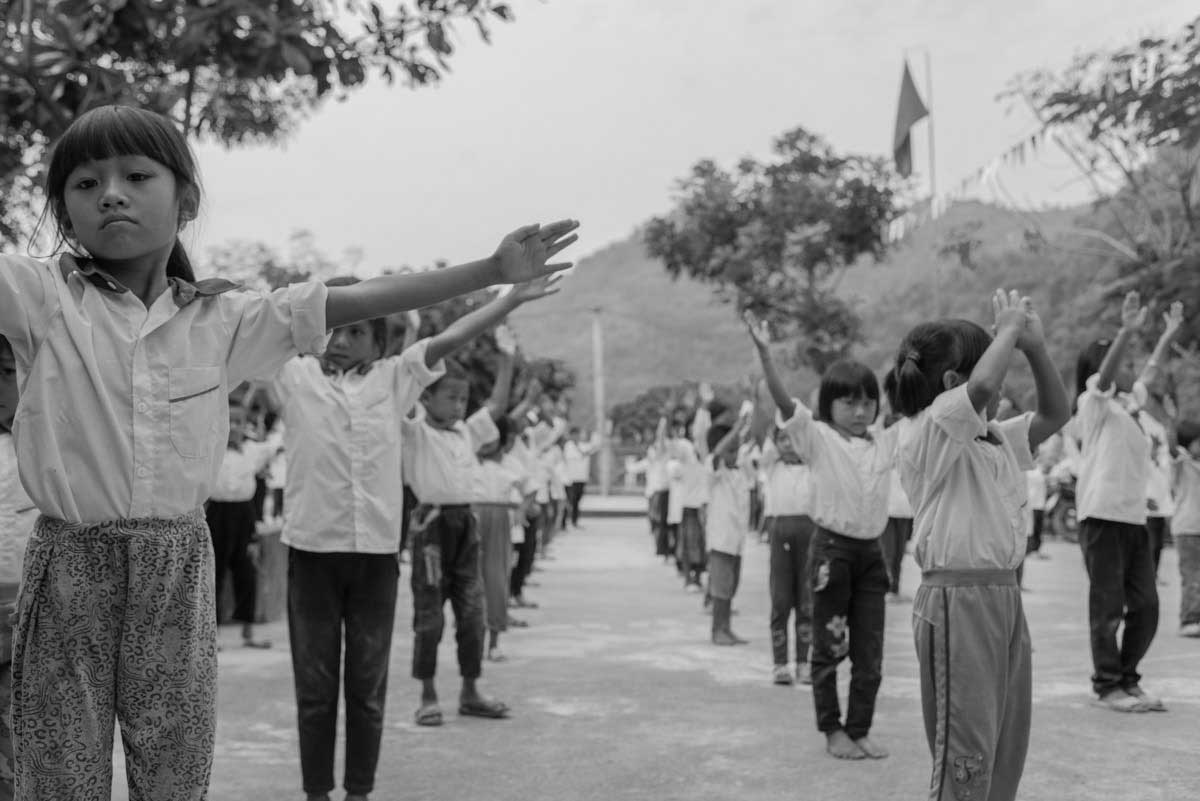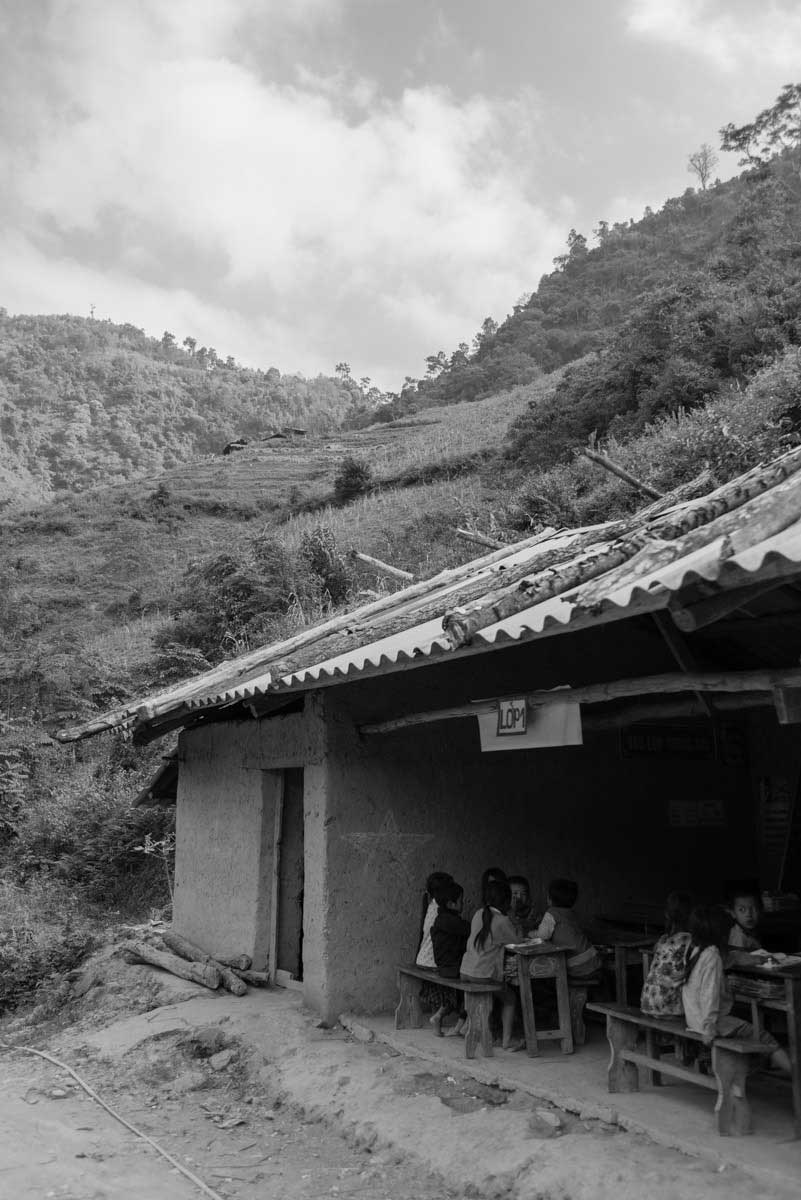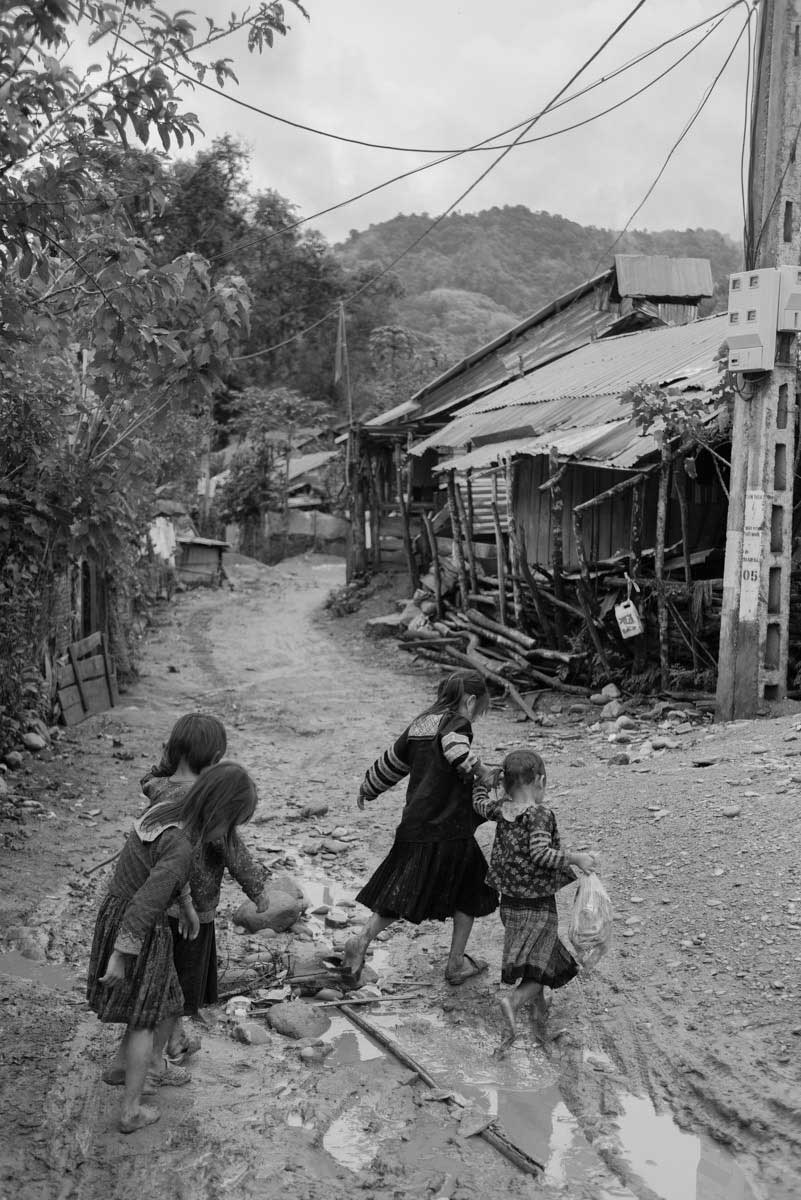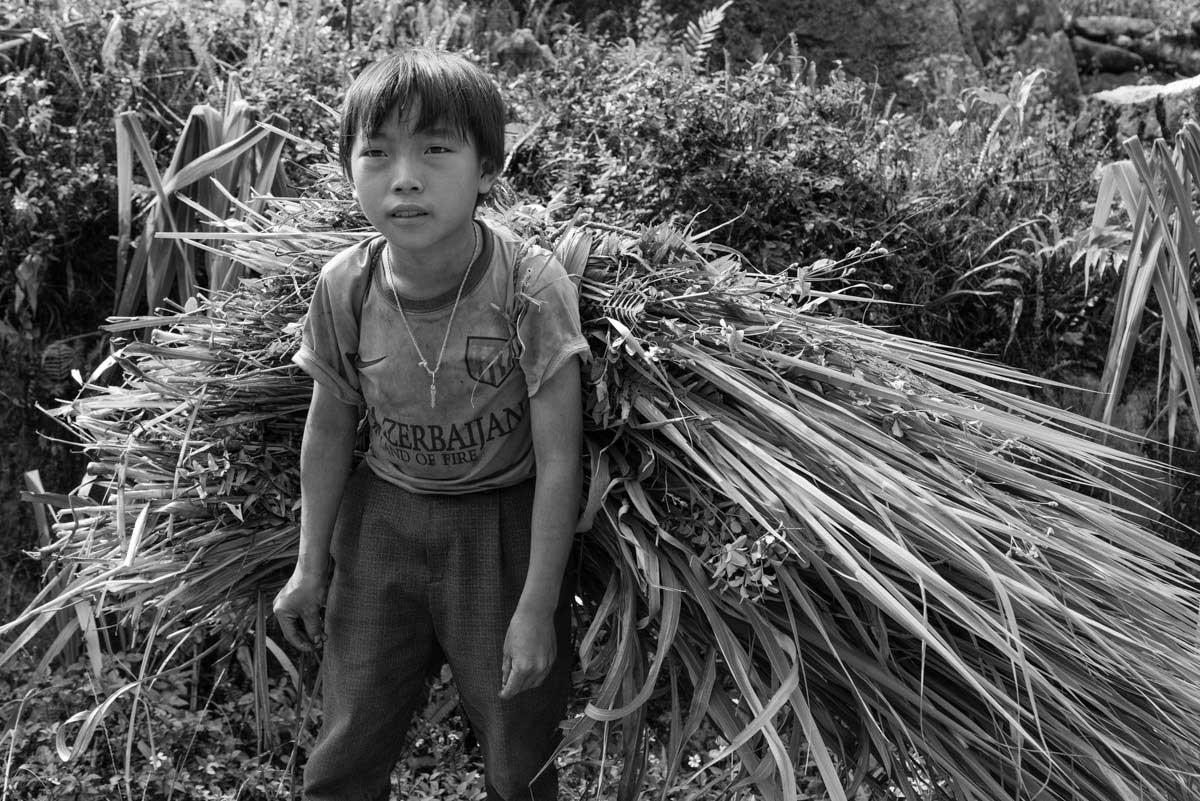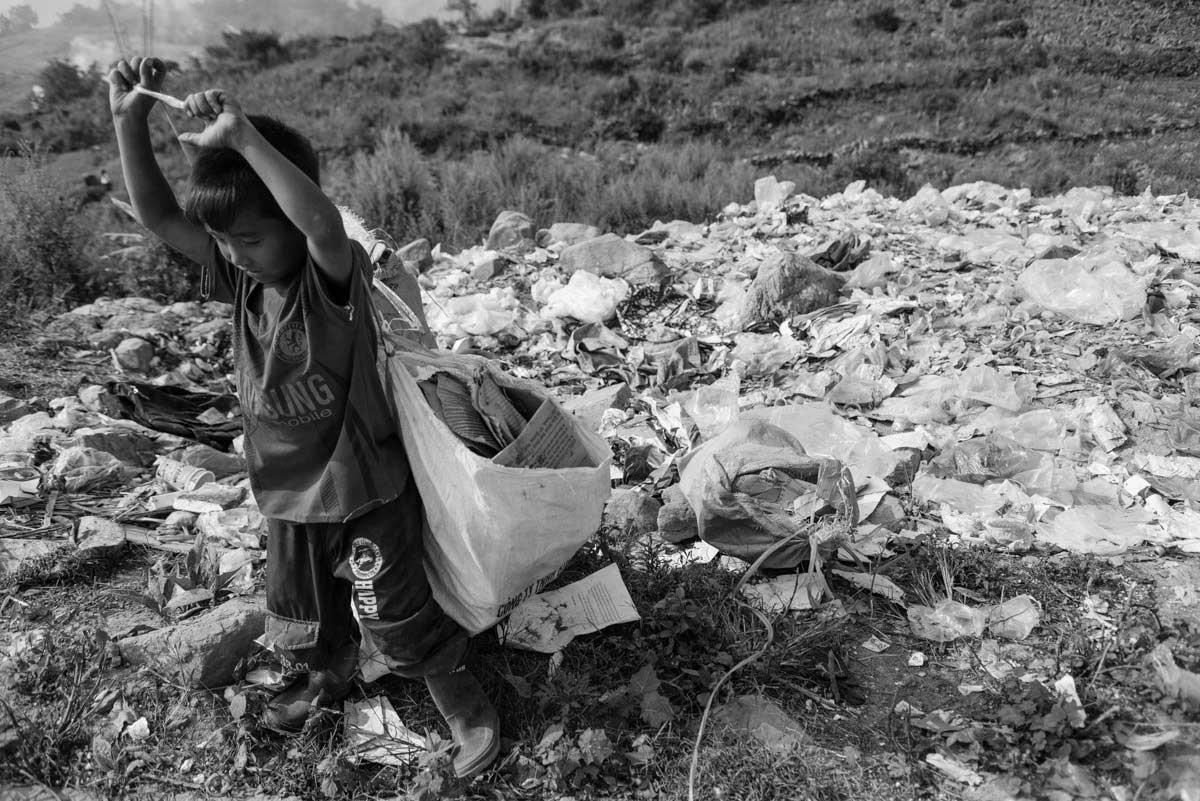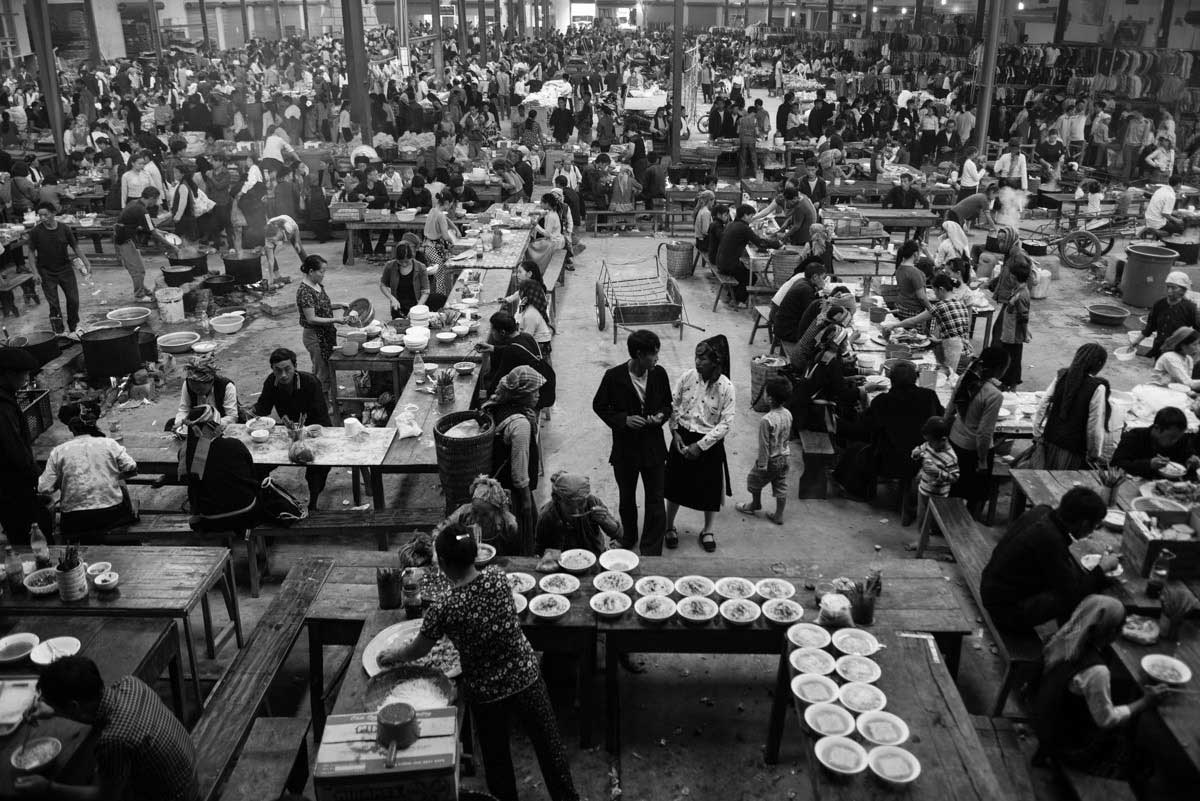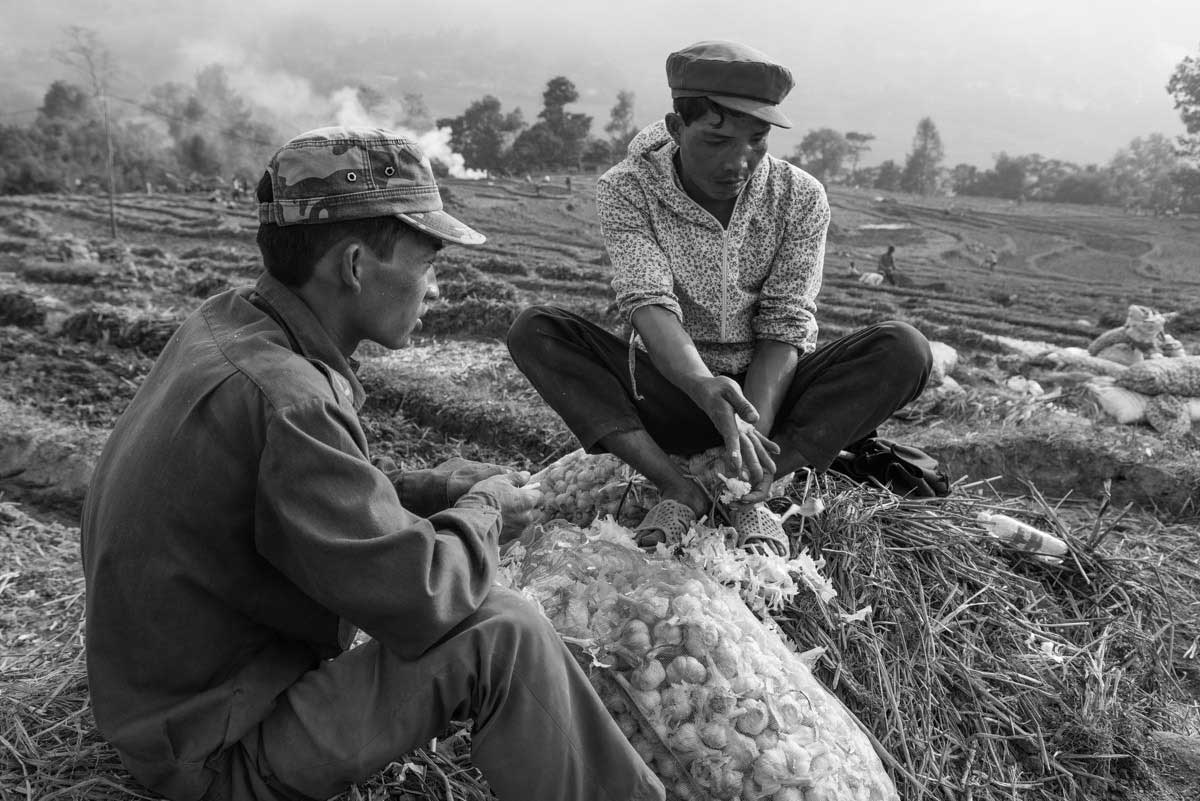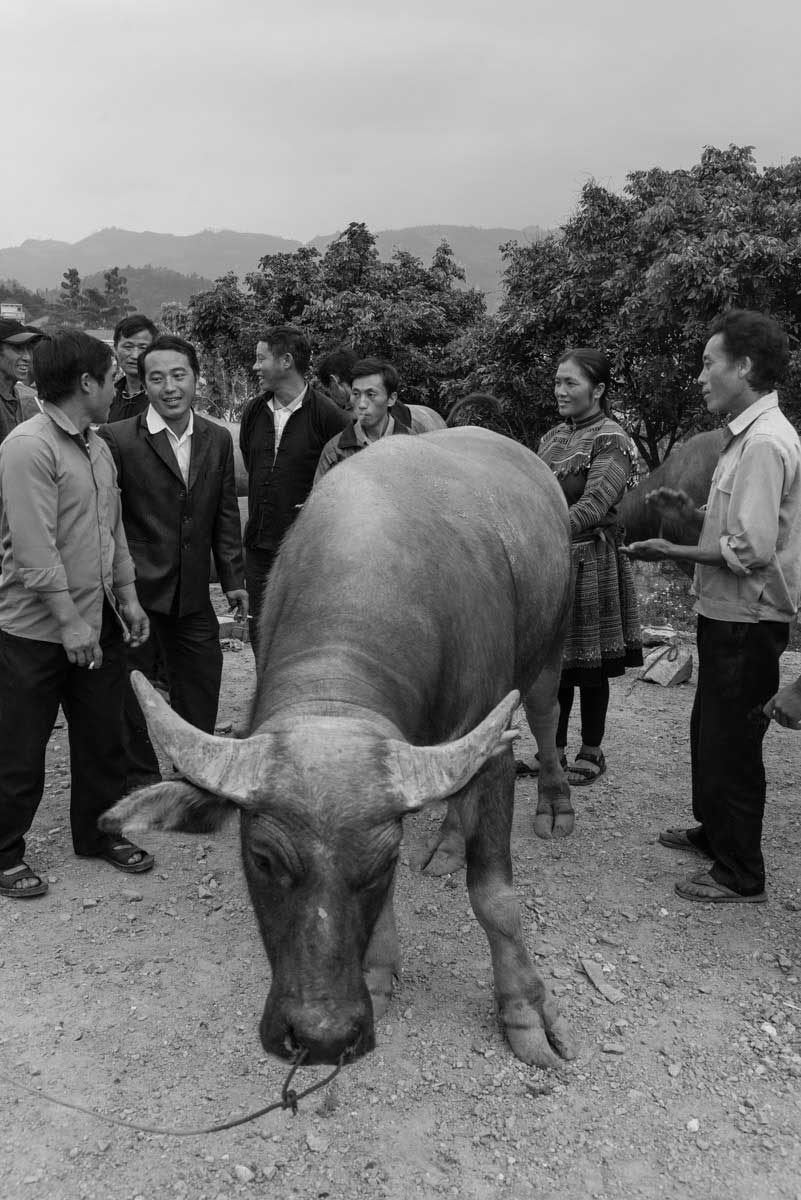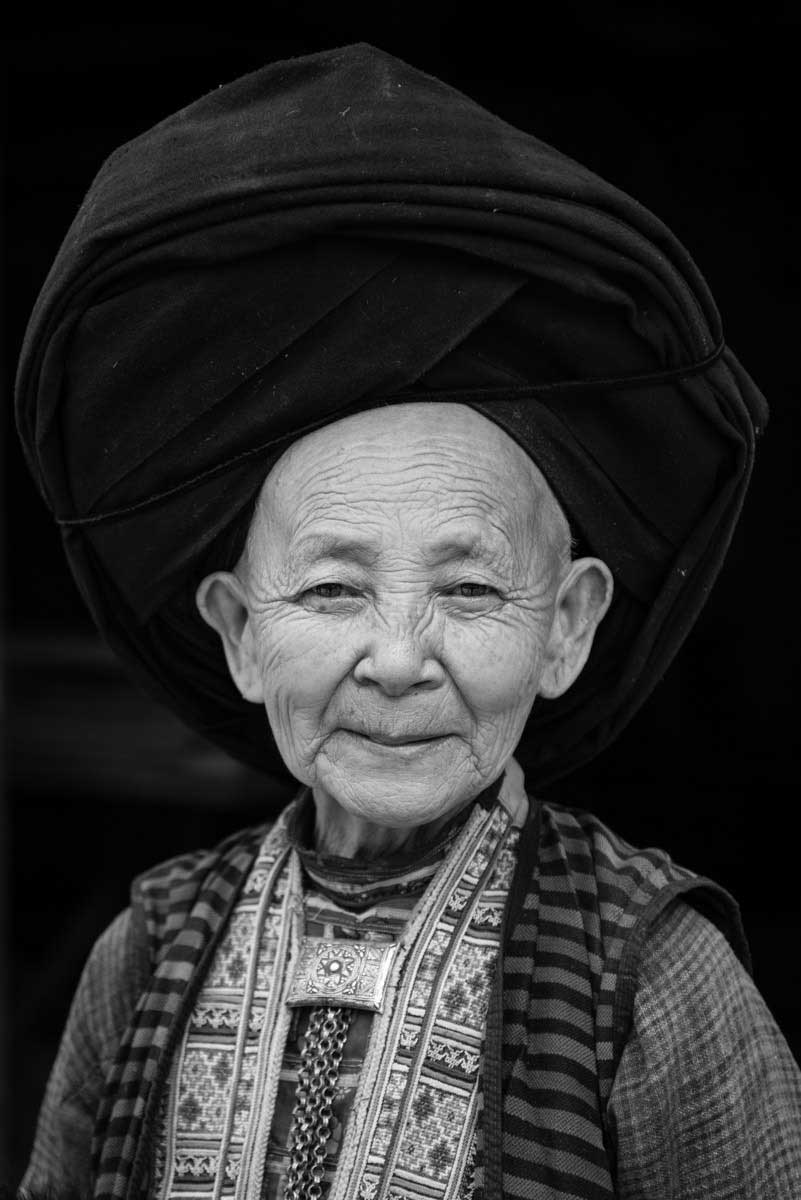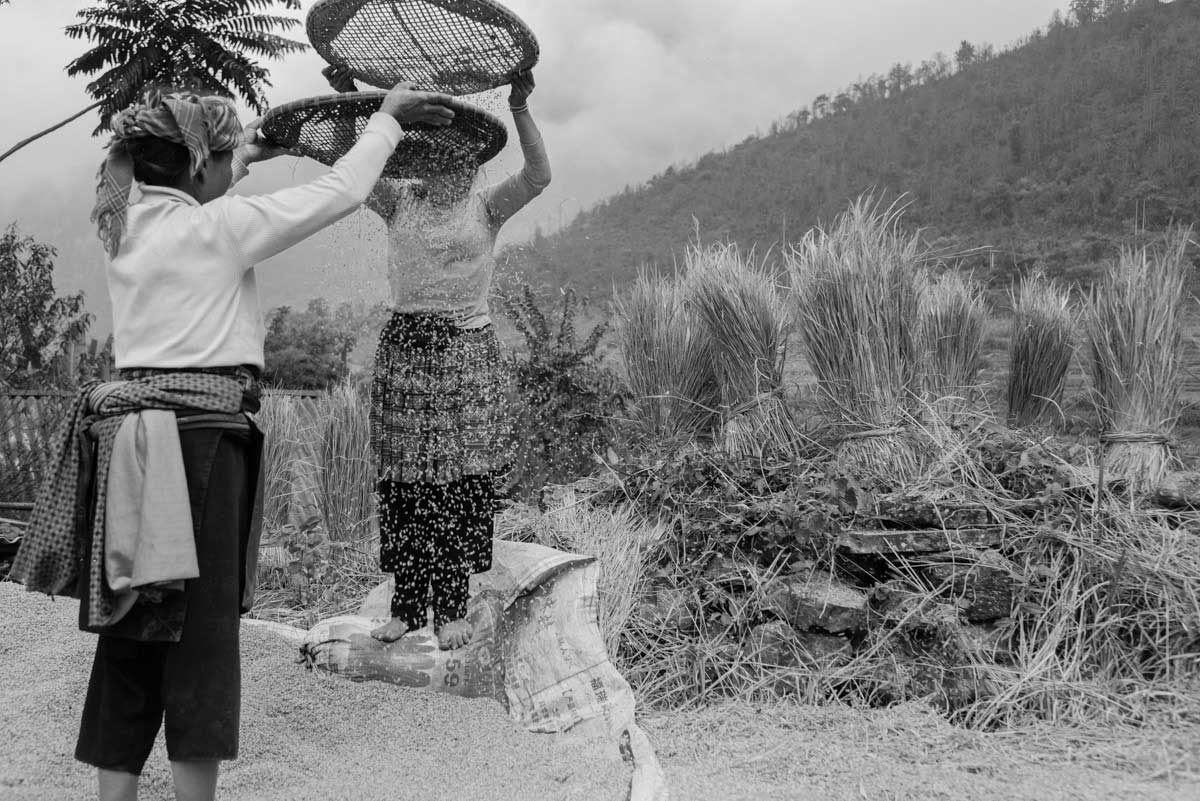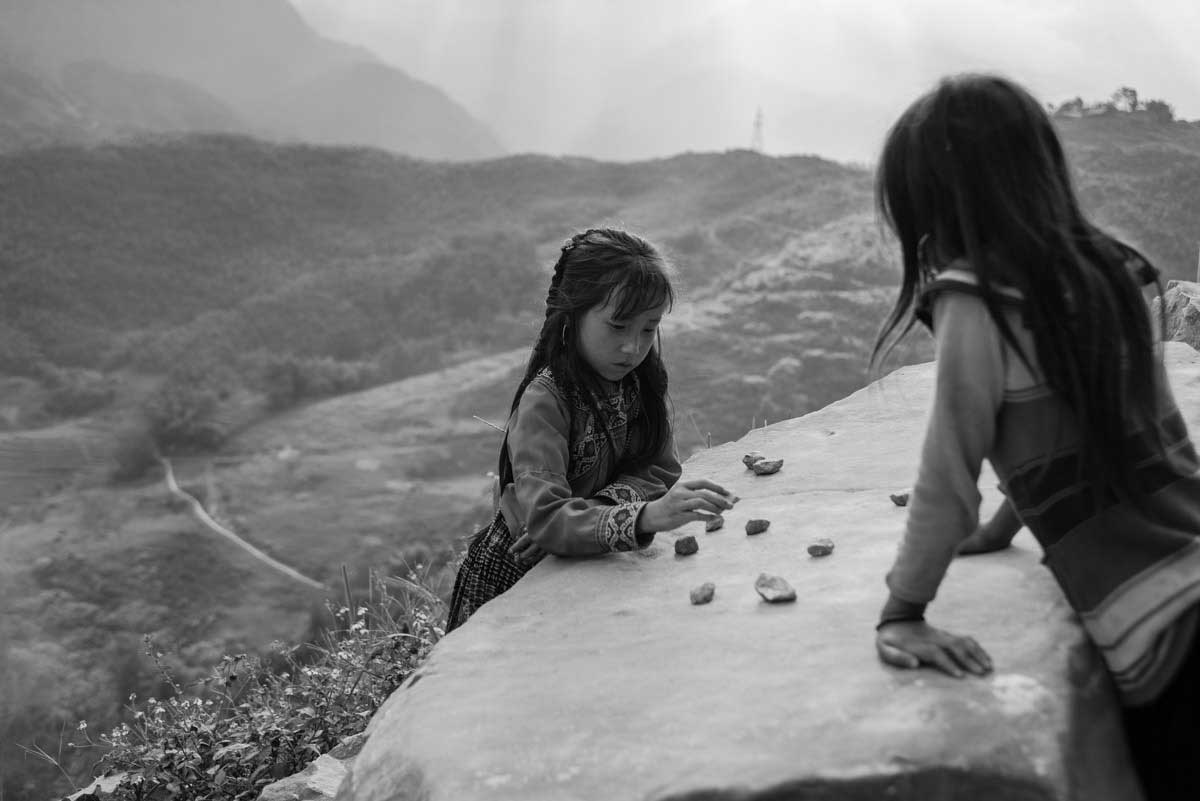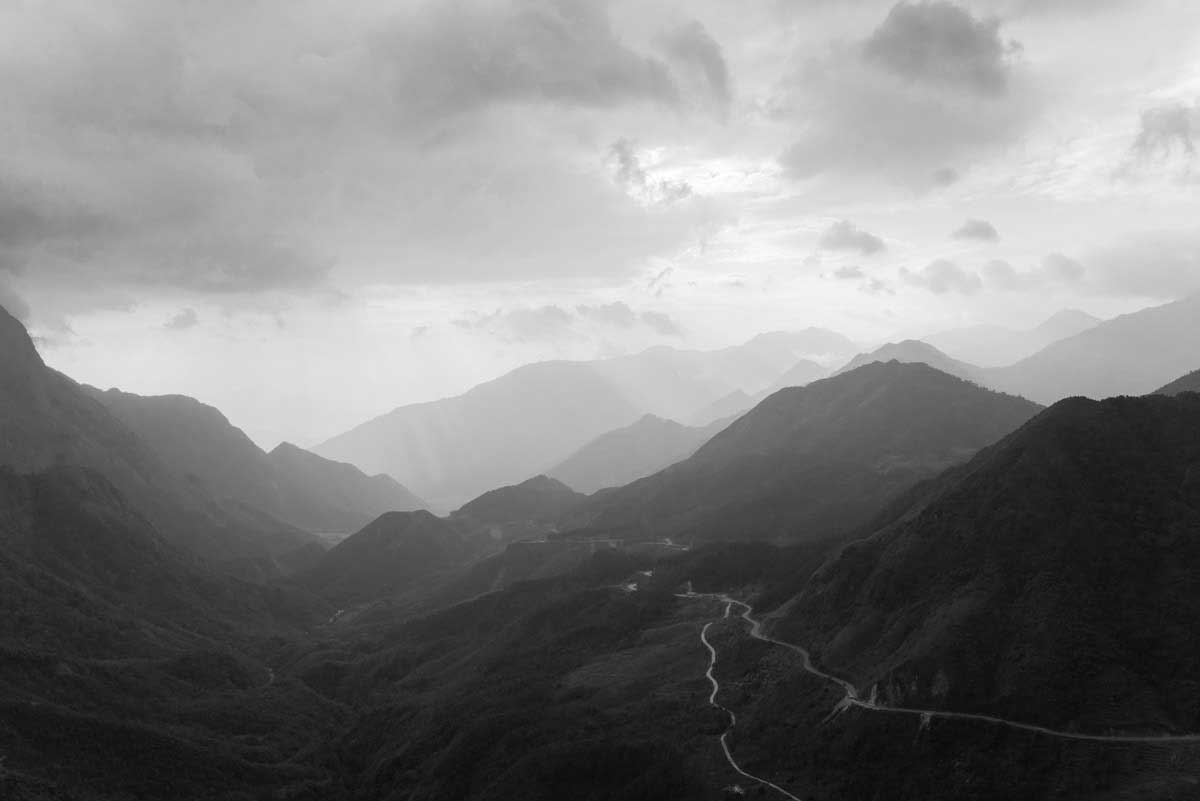“Mountainland” surveys the lives and societies of upland Southeast Asia with reference to the geographical and socio-scientific concept of Zomia, which understands the region as culturally different from the respective dominant lowland societies and tries to challenge the widespread perception and narrative of the cultural unity of Southeast Asia as a region. It highlights the classical lifestyle of the mountain dwellers vis-à-vis the respective lowland societies and documents their daily struggle for existence.
The Southeast Asian Massif is a region that sprawls across Vietnam, Laos, Cambodia, Thailand, Myanmar, China, India and Bangladesh, roughly 2,5 million sqare kilometers. Most of the people dwelling there are fragmented into hundreds of ethnic identities, linguistically and culturally distinct from the populations that dominate the state cores in the valleys. Estimations put the ethnic minority populations at around eighty million to one hundred million people. The population of the hills is far more dispersed and culturally diverse than that of the valleys and their history is best understood as a history of runaways from nationbuilding processes in the lowlands.
Historically all states, classical, colonial and independent nation-states, in the region have tried to bring such people under their administration and encouraged politics of economic, administrative, and cultral absorption into the majority population at the state core. Thereby making the upland both a space of political resistance and a zone of cultural refuge.
The region is knittered together not by political unity, but by comparable patterns of hill agriculture, dispersal, mobility, rough egalitarianism and cultural refuge from the institutional authority of the state. Rugged mountains and harsh landscapes are providing a homeland and shape the environment for the people balancing between traditional livelihood and modern structures. Naturally, today, in our fast growing, globalized world, the option of avoiding the state is one that is fast vanishing, also for the people of the hills. [Official Website]
Many children need to support their families rather than going to school.



